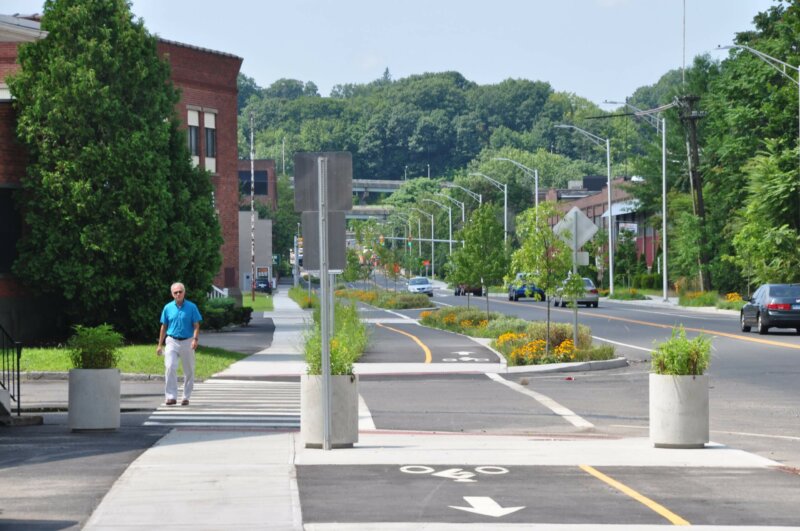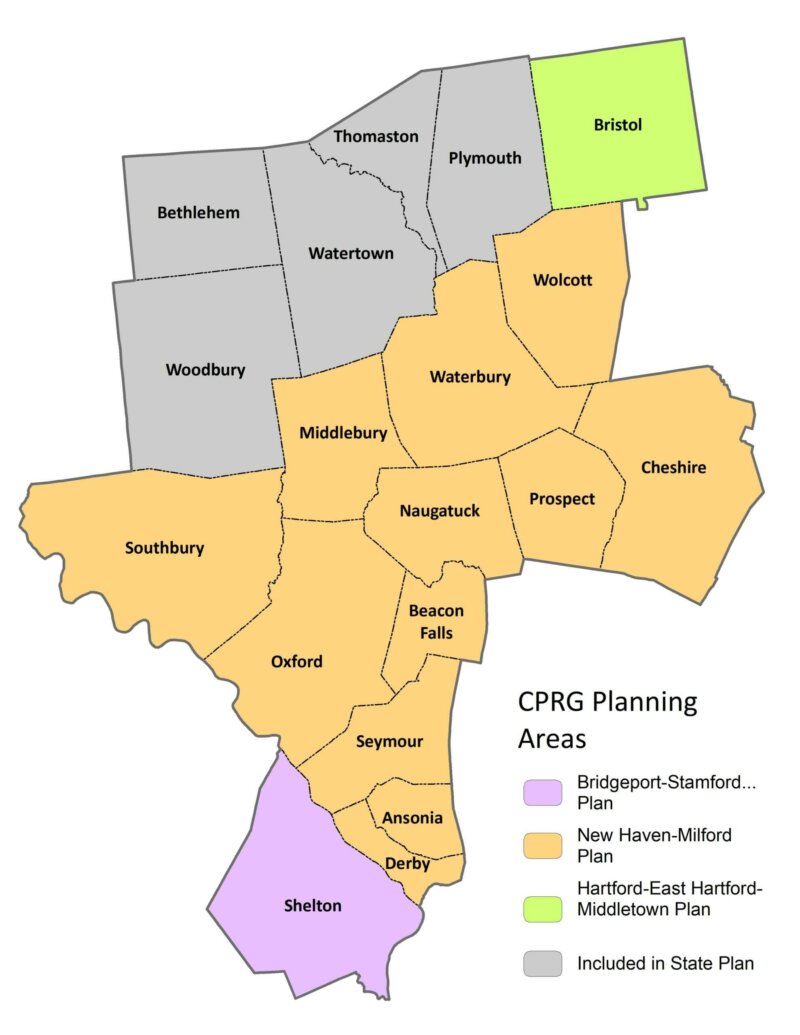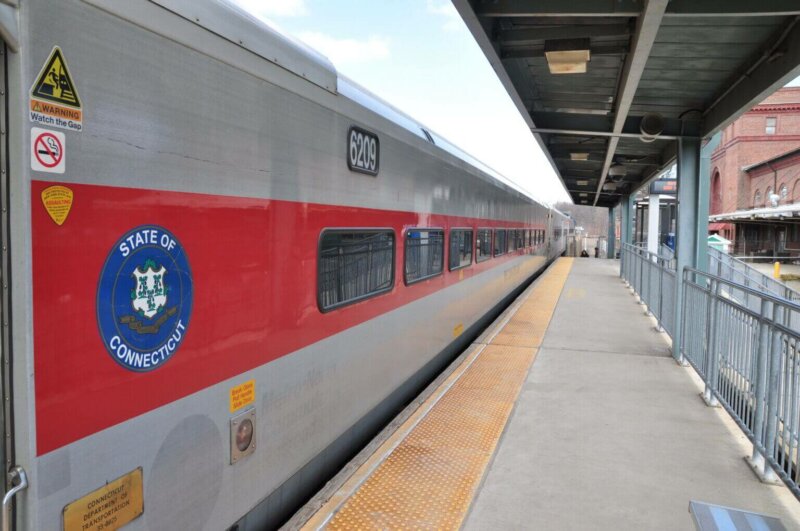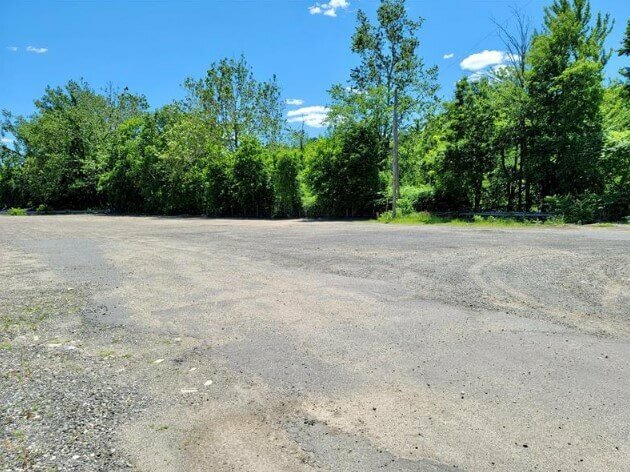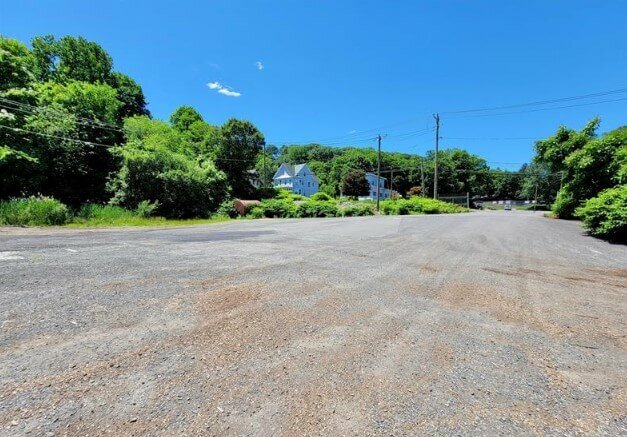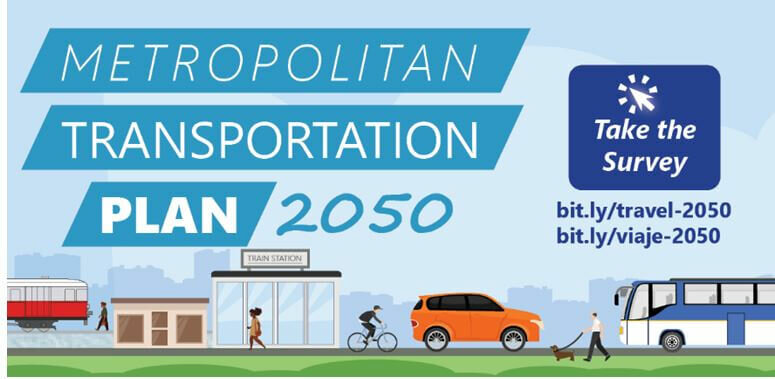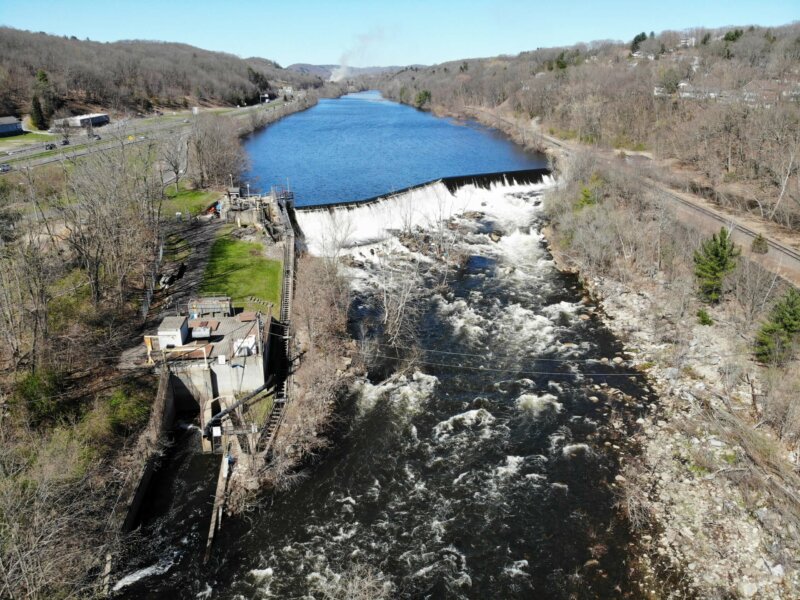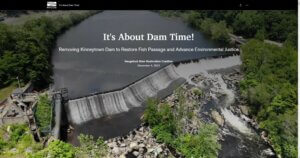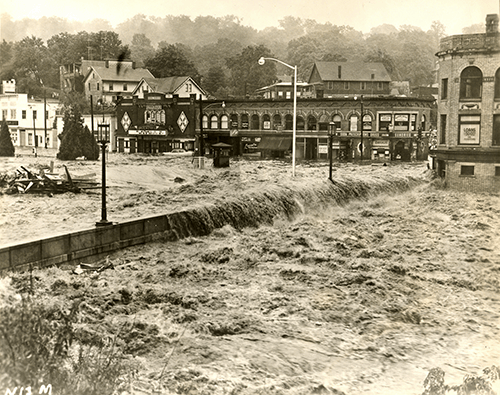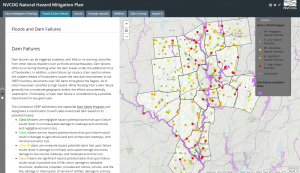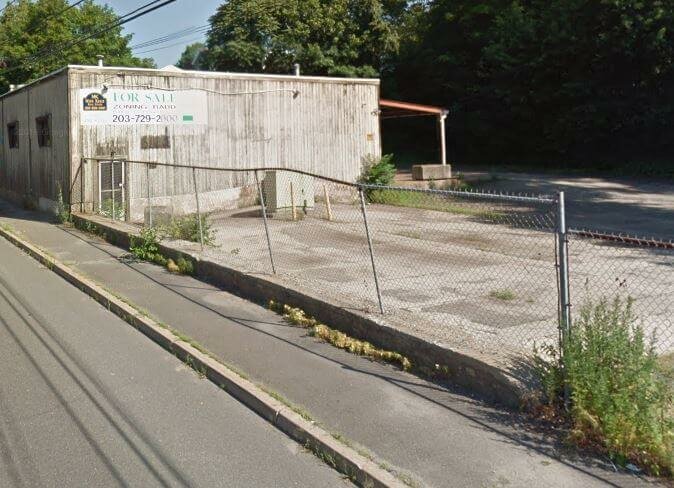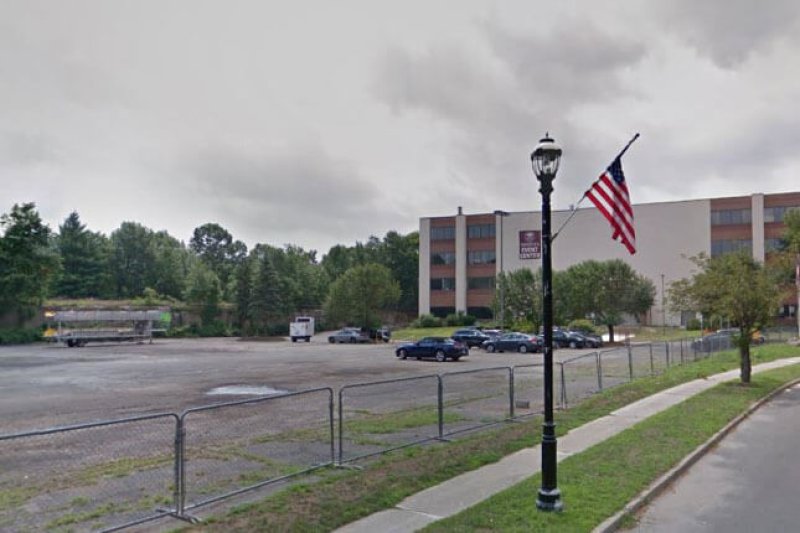The Naugatuck Valley Active Transportation Plan (NVATP) will aim to coordinate efforts across our 19 municipal members. By compiling best practices and standards, NVCOG aims to encourage increased access to safe, convenient walking/rolling and biking facilities.
Climate Pollution Reduction Grants (CPRG)
Waterbury Line Station Projects
Through a series of state and federal funding sources, the CT Department of Transportation is undertaking a project to upgrade all six Waterbury Line train stations. These upgrades will not only provide a safer and more comfortable experience for passengers but allow the stations to serve as key places within their communities, a source of civic pride and a gathering place for residents and visitors.
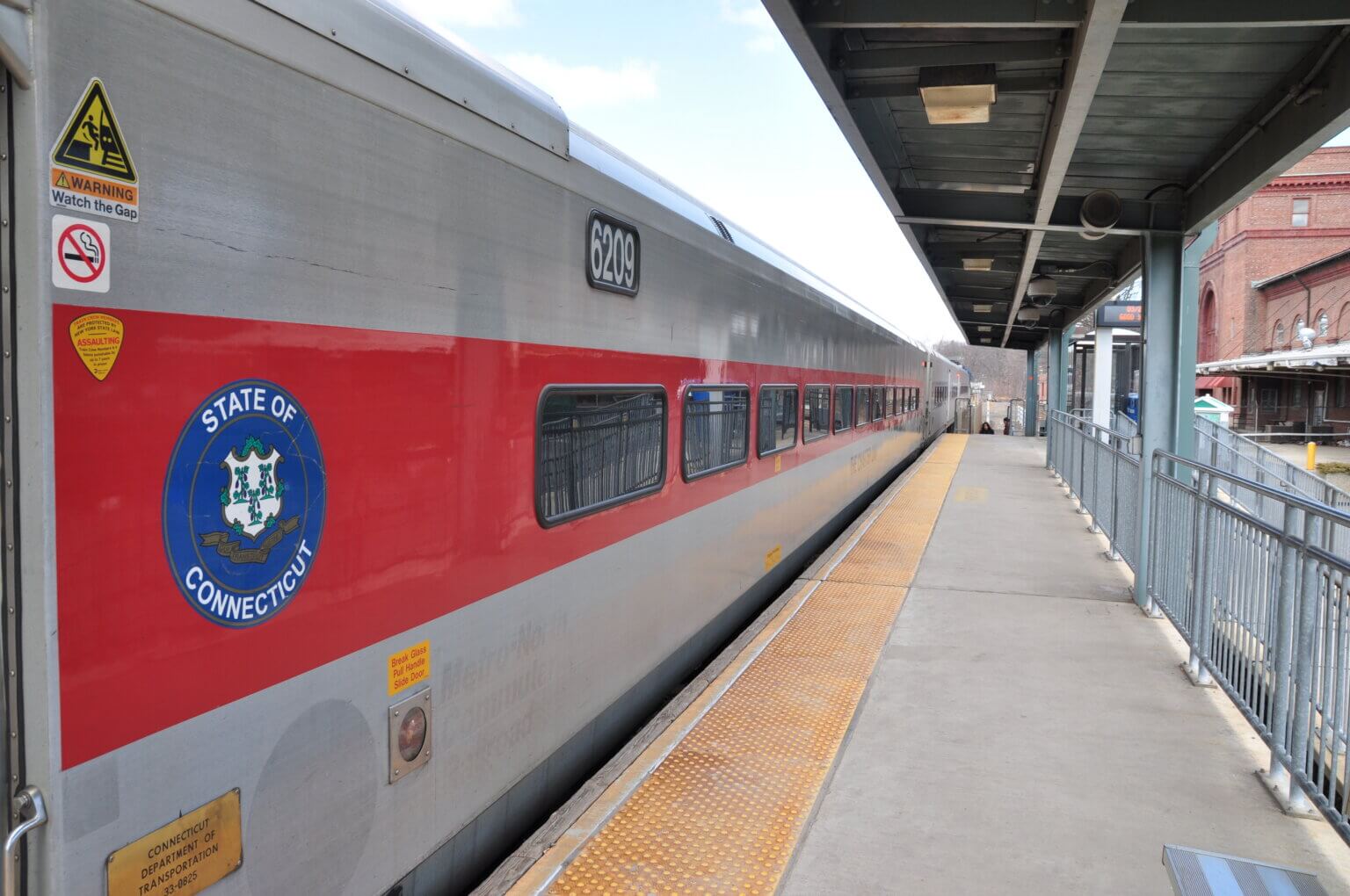
Currently Waterbury has the only ADA accessible platform in the NVCOG region. However, this platform is too short for high-level boarding at all doors and lacks amenities and comforts that passengers need. Meanwhile, the adjacent Waterbury Union Station, a spectacular example of New Haven Railroad architecture, is unavailable to passengers, who often have to wait significant amounts of time between trains. Two projects will, together, make the Waterbury Station a better, more comfortable place for riders while also allowing for more frequent and longer trains.
New Platform
The current platform in Waterbury is only long enough for trains with two cars, and even then only one car can open all of its doors. There are no ticket vending machines currently, and at arrivals and departures the small platform feels crowded. Using state funds added to the federal All Stations Accessibility Award, CTDOT will replace the current platform with one that meets all current standards, including being ADA accessible, 350 long to be able to accept 4 car trains, and equipped with all of the modern station amenities like ticket vending, real time arrival and departure information, and better space for waiting riders. In addition to the functional improvements, the new platform will match the Department’s new platform aesthetic, making for a more attractive station to match the significant improvements that have already been made to station area parking and pedestrian spaces.
Indoor Waiting
The CTDOT is currently working on plans to convert the southern portion of the old station building into a facility for riders, returning passengers to the building to provide a comfortable waiting space, restrooms, and station amenities.
The existing Naugatuck Station, located north of Downtown near the site of the historic Naugatuck Station, will be relocated south to a point closer to Downtown and key development parcels.
New Station
The new Naugatuck Station, located south of Maple Street and adjacent to Parcel B, will be more visible, easier to access from Downtown, and will help spur economic development in the area. The new station will similarly be built to modern station design standards, including a 350 foot, high-level platform, ticket vending, real-time arrival information, and will be fully ADA accessible. With modern but classic visual elements and consistent signage, the Naugatuck Station will serve as a centerpiece of a revitalized Naugatuck as well as a high-quality connection between the Borough and the Rail Line.
To facilitate the new station, improvements will be made by the CTDOT to Water Street and surrounding on-street parking, and will align with projects currently planned by the Borough for improvements to Maple Street and the surrounding area, will create a mixed-use, walkable neighborhood between Downtown, the East Side of the Naugatuck River, and the new station. Additional connections between the station, Downtown, and the Naugatuck River Greenway will further support these efforts.
Additional information about the project can be found on the CTDOT website here.
The currently proposed site plan, provided by CTDOT, can be found here.
The Town of Beacon Falls will receive an upgraded station built on the site of the existing station. Currently, Beacon Falls has a small, low-level platform, a parking area, and very few other amenities. The station, located across the Naugatuck River from Downtown and the Naugatuck River Greenway, is poorly integrated to the surrounding community and does not provide access to riders with mobility restrictions.
Funded through the USDOT’s All Station Accessibility Program and state matching dollars, the station will receive a new, 350 foot platform , starting near the same southern end of the existing platform and moving north along the parking area. This new platform will be covered, enclosed with a wrap-around windscreen, include real-time arrival information, ticket vending, and an enhanced waiting space, as well as be fully ADA compliant. New visual elements, including wayfinding signage and classic design elements, will better define the station area for travelers and better integrate the Beacon Falls Station with the surrounding businesses, homes, and natural amenities.
The town of Seymour will have an upgraded station built on the site of the existing station. Currently, Seymour has a small, low level platform, a mostly enclosed but not climate controlled waiting building, limited commuter parking, and few other amenities. In place of the existing station, a new, 350 foot platform will be built parallel to Route 115 and the Downtown area. This new platform will be covered, enclosed with a wrap-around windscreen, include real-time arrival information, ticket vending, and an enhanced waiting space, as well as be fully ADA compliant. Landscaping and way-finding will further provide a better and safer passenger experience.
Located between the Naugatuck River and Downtown, the existing Ansonia station is within close proximity to new Downtown restaurants and businesses, expanded housing, and a large industrial development site. Within Ansonia, the new station will be built on the site of the existing station, which is made up of two bus-shelter like waiting areas and a short canopy. Like the other Waterbury Line stations, Ansonia will receive a new, 350 foot platform, starting at the southern end near the gate in the flood wall and moving north to under the Maple Street Bridge. This new platform will be covered, enclosed with a wrap-around windscreen, include real-time arrival information, ticket vending, and an enhanced waiting space, as well as be fully ADA compliant. Landscaping and way-finding will further provide a better and safer passenger experience.
The Derby-Shelton station not only provides access for both communities to the Waterbury Line but serves as a critical juncture for the CTtransit New Haven Division, Greater Bridgeport Transit, and Valley Transit District bus services. The original Derby-Shelton Station, built by the New Haven Railroad, still stands, and though the building is closed to the public at this time the platform is still in service as the current station. The Derby-Shelton Station project is being funded by a RAISE Grant provided by the USDOT, as well as state funds. In conjunction with the ongoing reconstruction of Route 34, the new station will be well connected to Downtown Derby, Downtown Shelton, and the many new residences and businesses within the two communities.
Indoor Waiting
The existing Derby-Shelton station building, empty since the merger that created the NVCOG in 2015, will be restored in close coordination with the State’s Historic Preservation Office. By ensuring that the building retains its historic elements, not only will it provide a safe and comfortable waiting area for passengers but continue to serve as an important and living piece of Derby’s history.
The project will restore interior passenger waiting, including a potential tenant space, public restrooms, and passenger amenities. The new platform will be connected to the indoor waiting space under the existing platform canopy, ensuring that riders waiting indoors have a protected path to trains during inclement weather.
New Platform
Bus Facilities
In addition to serving as the train station, the Derby-Shelton Station is also served by the CTtransit New Haven Division and Greater Bridgeport Transit. To better facilitate transfers between these services, new bus bays will be built within the station area, providing dedicated space for passenger boarding and alighting as well as electric bus charging stations.
Public Engagement
Throughout the project, a series of public meetings will he held in communities along the Waterbury Line to share concepts and gather feedback regarding station replacements. These meetings will be posted here, as well as to the NVCOG Calendar.
Naugatuck Public Meeting
The first public information meeting for any of the Waterbury Line station replacements was held by CTDOT staff on November 15, 2023. The meeting was fully virtual and the recording is attached below.
226 Rubber Ave, Naugatuck
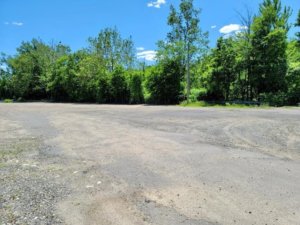
Project Type: Cleanup Planning
Activities: The Borough of Naugatuck was sub-granted $45,000 for assessment activities at 226 Rubber Ave. Environmental data collected on site will help the Borough determine redevelopment options for future reuse.
Project Status: Environmental site assessment activities are complete. Reports are currently under review by the Borough.
0 Andrew Avenue, Naugatuck
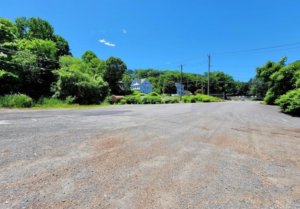
Project Type: Cleanup Planning
Activities: The Borough of Naugatuck was sub-granted $200,000 and an additional $350,000 for cleanup planning and remedial activities at the former Risdon Manufacturing site. Environmental data collected on site will help the Borough of Naugatuck determine redevelopment options for future reuse.
Project Status: Environmental Site Assessment Activities are complete. Reports have been reviewed by the Borough of Naugatuck and NVCOG staff. The Borough of Naugatuck issued a request for proposals and selected a subcontractor to preform cleanup activities, including the excavation and removal of contaminated soils.
Public Meeting: NVCOG hosted a public information meeting on April 27, 2023 to present key updates on upcoming work and answer inquiries regarding cleanup at 0 Andrew Avenue, Naugatuck, CT.
SLR International Consulting has produced a Community Relations Plan and Analysis of Brownfield Cleanup Alternatives. Copies are available by clicking on the links above and at Naugatuck Town Hall.
MTP 2050
Kinneytown Dam Removal
For nearly two centuries, migratory fish have been blocked from most of the Naugatuck River by Kinneytown Dam in Seymour. That continues today, with the facility no longer producing electricity and serving no useful purpose. Now, a project is underway led by NVCOG in partnership with Save the Sound to remove Kinneytown Dam. Removal will open miles of restored habitat to shad, alewife, lamprey, river herring and other anadromous fish, and will also reduce flood risk, remove a safety concern and eyesore, and reconnect communities to recreational opportunities along the Naugatuck River.
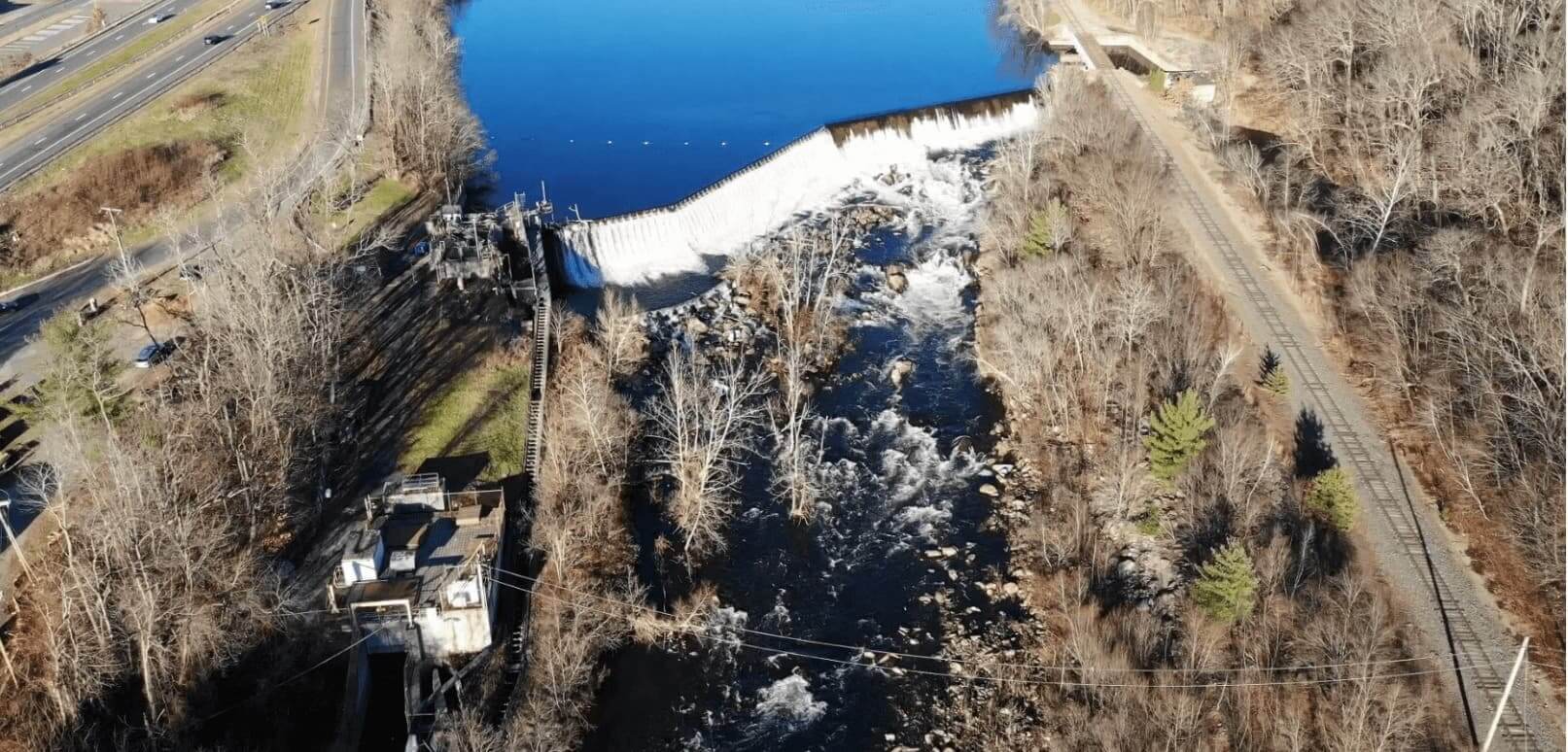
After the longstanding failure of a fish ladder at Kinneytown Dam came to light in 2019, the Naugatuck River Restoration Coalition was formed to advocate for the restoration of fish passage on the Naugatuck River. Consisting of NVCOG, the Naugatuck River Revival Group, and Save the Sound, the Coalition has worked with state and federal regulatory agencies to shed light on the failure to pass fish as required by Kinneytown Dam’s federal license exemption and encouraging the dam owner to remedy the situation.
It has become clear that restoring hydroelectric generation while providing safe, timely and effective fish passage at Kinneytown Dam is not economical, and removal of the dam is the only way to fully restore fish passage at the site. In partnership with Save the Sound, NVCOG applied for and received funding through the NOAA Restoring Fish Passage Through Barrier Removal grant program under the Bipartisan Infrastructure Law (BIL) in 2022 for the acquisition and decommissioning of the facility, and for the design and construction work leading to the dam’s removal. The project is supported by municipal leaders, state and federal regulatory agencies, the CT federal delegation, environmental advocates, and the current dam owner.
The Coalition has developed an Interactive Story Map to explain the issue. Project details will be continually added here and on the Story Map, so please check back often!
Explore the Issue:
This interactive storymap details the effort to restore migratory fish to the Naugatuck River, the longstanding issues at Kinneytown, and the current plan to remove the dam.
NVCOG FERC Docket Filings:
Staff Contact:
Regional Hazard Mitigation Plan Update
The final Regional Hazard Mitigation Plan and Municipal Annexes have been posted to the NVCOG Hazard Mitigation Plan webpage. The Plan has been adopted by all 19 NVCOG Communities, and the NVCOG Board endorsed the plan on December 10, 2021. FEMA approved the plan in January, 2022.
In 2019, NVCOG received funding from the Federal Emergency Management Agency (FEMA) to conduct a multi-jurisdictional Natural Hazard Mitigation Plan (NHMP) for all 19 NVCOG municipalities.
An approved NHMP is required by FEMA to qualify a municipality for certain federal mitigation funding. NHMPs must be updated every 5 years. The purpose of this project is to update municipal NHMPs and develop a consolidated multijurisdictional plan for the entire Naugatuck Valley planning region in compliance with FEMA standards and requirements that will serve as the approved NHMP for each NVCOG municipality.
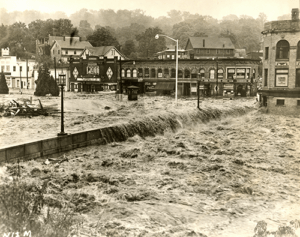
The NHMP will identify natural hazards and risks, existing capabilities, and activities that can be undertaken by a community to prevent loss of life and reduce property damages associated with the identified hazards. Public safety and property loss reduction are the driving forces behind this plan. Careful consideration will also be given to the preservation of history, culture and the natural environment of the region.
Milone & MacBroom Inc. (MMI) was selected to serve as the project consultant. MMI has extensive experience developing NHMPs in the region and across the state. NVCOG is administering the project and has prepared a detailed scope of work in collaboration with MMI. The project is expected to take 18 months and will include extensive public and stakeholder outreach and coordination with various municipal officials and departments.
Interactive Storymap:
Click on the tabs at the top of the Project Storymap and scroll through the narrative to learn about hazards impacting the region and view topical maps.
Staff Contact:
Aaron Budris
Environmental Planning Director
abudris@nvcogct.gov
Naugatuck 251 Rubber Ave
Project Type: Assessment
Activities: Phase I and Phase II Environmental Site Assessments
NVCOG has conducted an environmental assessment in order to facilitate potential site transfer. The property is improved by a 2-bay service garage. Assessment is funded by petroleum funds through NVCOG’s FY2016 EPA Assessment grant, as approved by the Connecticut Department of Energy and Environmental Protection and by U.S. EPA Region 1.
Project Status: Phase I and Phase II Environmental Site Assessments complete.
Naugatuck Parcels A&B
Project Type: Clean-up
The NVCOG Revolving Loan Fund Committee awarded the Borough of Naugatuck $100,000 toward remediation. The Borough will primarily abate asbestos at Parcel B.
Project Status: Remediation has been completed.
Documents:
Naugatuck Parcels A&B Analysis of Brownfield Clean-up Alternatives
Naugatuck Parcels A&B Community Relations Plan

